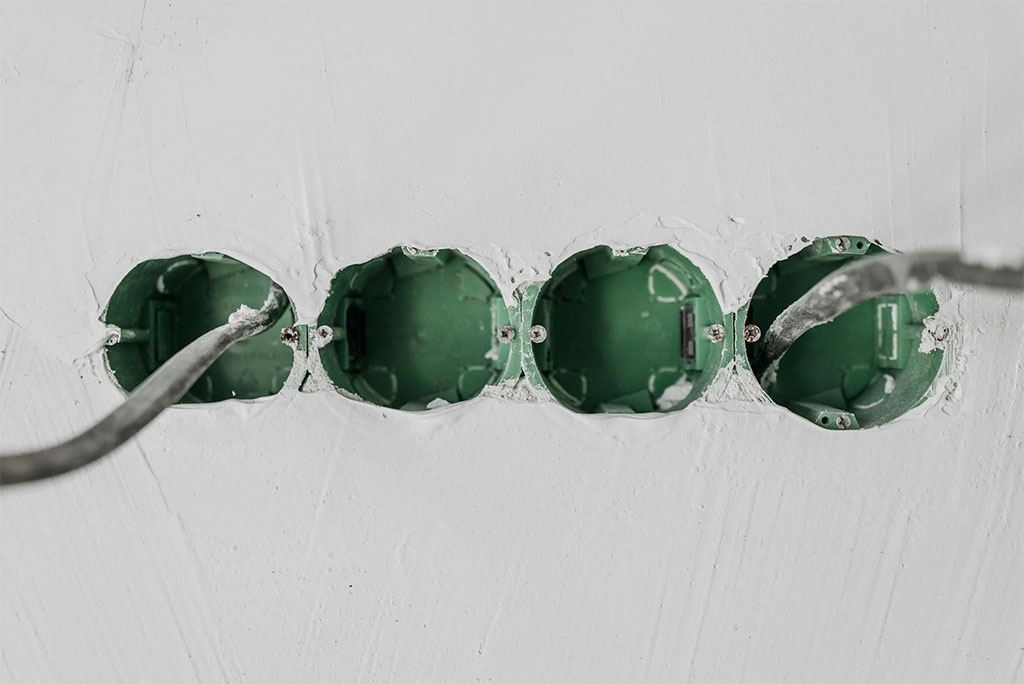Owning a home is an aspiration for many people. However, it also comes with significant risks. Yes, it’s nice watching the equity in the property increase. But it is also a problem when things break, and to maintain that equity, you have to spend a lot of money.
Fortunately, this post is here to help. It looks at some of the things that could go wrong in your home and what to do about them. We also briefly mention preventative measures you can take if the problem hasn’t occurred yet, but you think that it might.
Cracked Driveway
A cracked driveway isn’t usually the end of the world, but the longer this problem persists, the more challenging it is to repair.
Cracked driveways are most common on concrete formwork. Usually, what happens is that a builder comes along, lays the driveway, smooths it out, and leaves it to set. For the first few months, everything is okay, but as vehicles and the weather degrade it, things can go wrong quickly.
The good news is that the solution to this problem is usually fairly easy to implement, and you can prevent the cracking from getting worse over time. Here’s what to do:
- Clean out the cracks and remove any moss or dirt. Use a pressure washer if you want.
- Wait for the cracks to dry and then use a patching compound designed for your driveway material (usually concrete)
- Lay the patching material where there are cracks and monitor the driveway for further deterioration
Usually, when you have a cracked driveway, it takes two to three years for you to figure out whether it has a serious underlying problem. If new cracks appear, it is often worth talking to a professional contractor and getting their opinion on what you should do next.
Faulty Electrical Outlets

Faulty electrical systems are another issue that you sometimes bump into as a homeowner. These can occur for all sorts of reasons. One culprit is simply old wiring. Like everything else, it has a shelf life and usually requires repairing after 30 to 40 years or so (because the plastic surrounding the copper wires becomes fatigued). Tripped GFCIs and overloaded circuits are also common issues, so just be aware of these.
Usually, you know if you have faulty outlets if:
- You keep tripping your circuit breaker whenever you turn on specific circuits in your home
- You have smoke pouring out of your plugs or walls
- Your plug sockets won’t supply power
To fix this problem, check the circuit breaker and look for the circuit causing you issues. Test the GFCI outlets in bathrooms and see if these are causing problems (since they are such a common culprit).
Hire an electrician to inspect the circuitry for issues and see if there is a quick fix. If you need to rewire the whole house, ask them to provide evidence, showing you what’s wrong and why the work is necessary.
Water Heater Issues
Water heater issues are another problem you might encounter. Usually, they stop working properly because of faulty thermostats, leaks or sediment buildup.
Fortunately, water heater repair and replacement are widely available. These services simply come in and fix the problem without you having to worry about it yourself.
The best approach is to simply maintain your water heater by removing the gunk that can build up and ensuring it is the proper temperature and pressure for its specifications. If you service it every 24 months or so, you can usually avoid many of the long-term problems that people run into.
You might also be able to fix some leaks yourself if they are around connections. Usually, you’d turn off the main water supply, drain the water heater, and then look for damage to disconnected flanges, washers, and valves. If you can feel water, that usually tells you that you have a leak (since water heaters should be dry on the outside).
Pest Infestations
You may also run into pest infestations during your time as a homeowner. Animals will often get inside, especially if they think you offer a source of food or shelter.
Pest infestations usually involve insects. However, you may also notice mice scurrying around under your floorboards.
If you have a pest problem, focus on sealing their entrances into your home. Make sure you patch up any holes so that they can’t get back inside once you deal with the problem inside the home. Furthermore, any remaining critters inside that can’t get out won’t survive long (which is why you see so many dried-up wasp nests inside attics).
Bait traps can also work, but these are usually only effective if your infestation is small or in the early stages. If it is already quite extensive, then professional poison may be the only way to go.
Broken Garage Door
Garage doors seem to be the first part of the home that breaks, and most people live permanently with their openers in a state of disrepair.
The most common issues are motor-related. Poor or improper use causes them to burn out quickly. Misalignment is another problem, as well as physical damage, preventing the mechanism as a whole from working properly.
If you have a problem like this, try the following fixes:
- Adjust the sensor so that the lenses face each other (so that the garage door knows when to open and shut)
- Get a professional to replace broken springs (to avoid injury to you)
- Test the auto-reverse feature every so often to check that it still works
Faulty Smoke And Carbon Monoxide Detectors
Another issue you want to avoid at all costs is faulty smoke and carbon monoxide detectors. If these don’t work, your life could potentially be at risk.
Fortunately, sorting these issues out is fairly simple. Regulation devices will have a button you can press to test them to ensure they are working properly. If they aren’t, try replacing the battery and see if that fixes the problem. If it doesn’t, simply replace the unit.
Peeling Paint
Peeling paint is another annoying home health problem that you will sometimes encounter. This issue crops up every now and then if you don’t stay on top of it.
Usually, the problem is improper surface preparation. Whoever did the painting, didn’t prepare the surface well enough.
The other issue is moisture. If there’s damp behind the wall, that can cause paint to peel quite seriously. Even condensation can be a factor.
To resolve peeling paint issues, you’ll want to remove the paint first (since it isn’t usually recoverable), and smooth the surface. If water damage is the issue, you’ll want to leave it for a while to see if any damp spots develop. If they do, then it is worth calling in the plumber.
If nothing happens, then make sure you prepare the wall with sugar soap and sand it down to prevent similar problems from occurring in the future. Then, use a high-quality paint designed for the setting, particularly in areas prone to condensation, like the kitchen or bathroom.
Squeaky Door Hinges
Another consideration is squeaky door hinges. These can get annoying really quickly, which is why people want to find fixes for them as soon as they can.
The good news is that door squeakiness is usually quite straightforward to fix. All it requires is a bit of know-how.
You’ll want to start by removing and cleaning the door hinge pin. These can start making noises if they are covered in trapped dust or dirt. Removing it and oiling them with a light oil can prevent squeaks from returning.
If the pin or the hinge is damaged (and you can see it), then replace it. You can get door hinges from hardware stores, and they don’t cost much. Just make sure you lubricate the hinge before reinserting it.
The door shape can also be an issue. If it is wonky or the mountings are incorrect, fix these. Sometimes, this involves removing and replacing the door frame, or reworking the surrounding wood.
Flickering Lights
Lights flickering is another problem you sometimes encounter at home, and it usually relates to your electricals. Unfortunately, it can indicate quite a severe problem, so you’ll want to solve it as rapidly as you can.
First, check the light is actually in the socket. If there’s a loose connection or damage to the contact points, that can cause flickering.
If you think damage to the bulb might be the problem, try another and see if you run into the same issue.
If there’s a connection behind the light, unscrew it from its fitting and look behind it. Sometimes, the wires going into the back of it can become loose.
Finally, if all else fails, you’ll need to hire an electrician. If all the lights in your home are flickering, it suggests a problem with the circuit and further behind-the-scenes problems with the circuit breaker (as it should cut out if you have a problem with lights flickering).
So there you have it: some of the things that can go wrong with your home and how to fix them.









